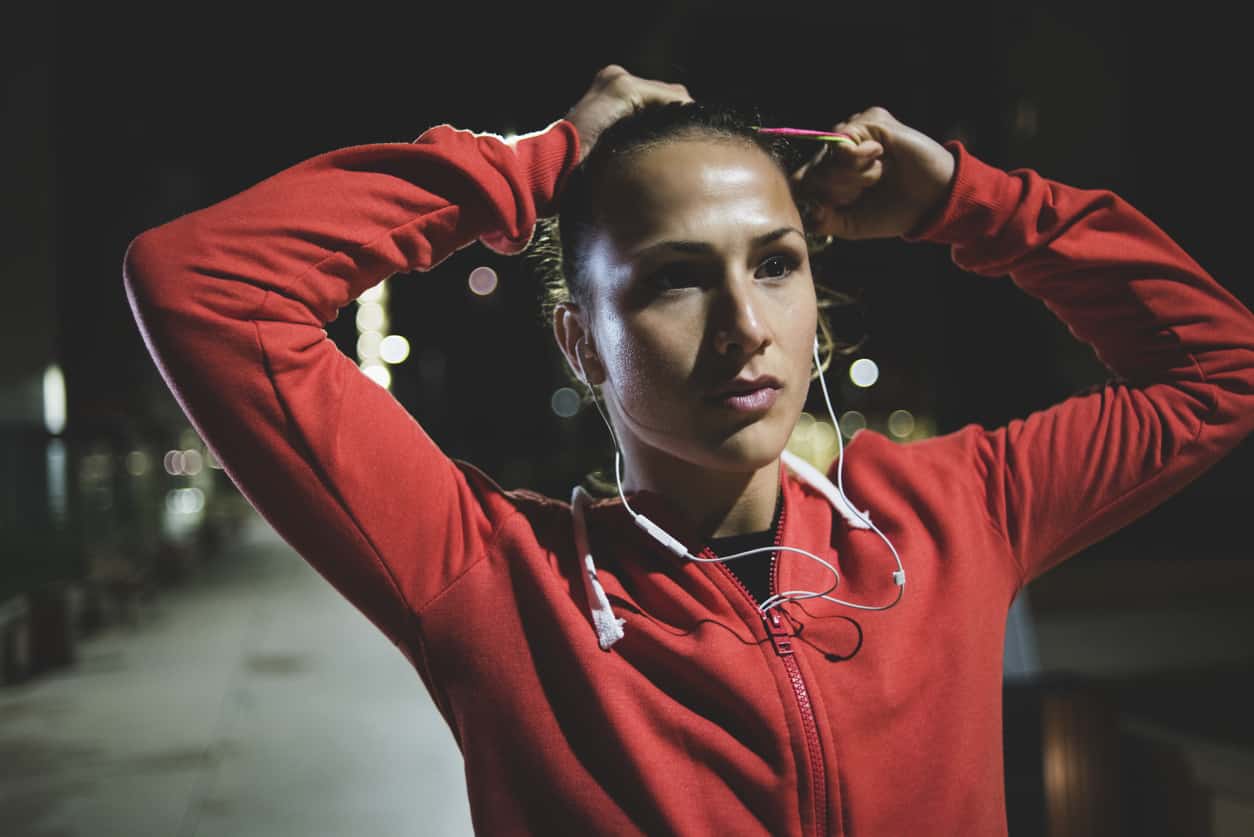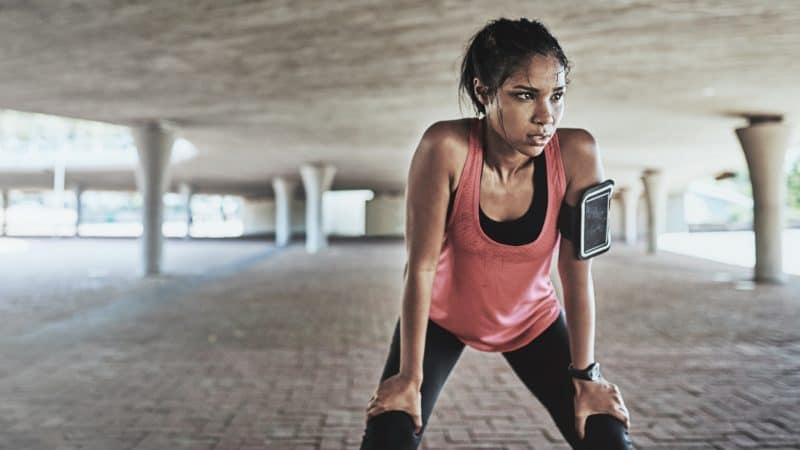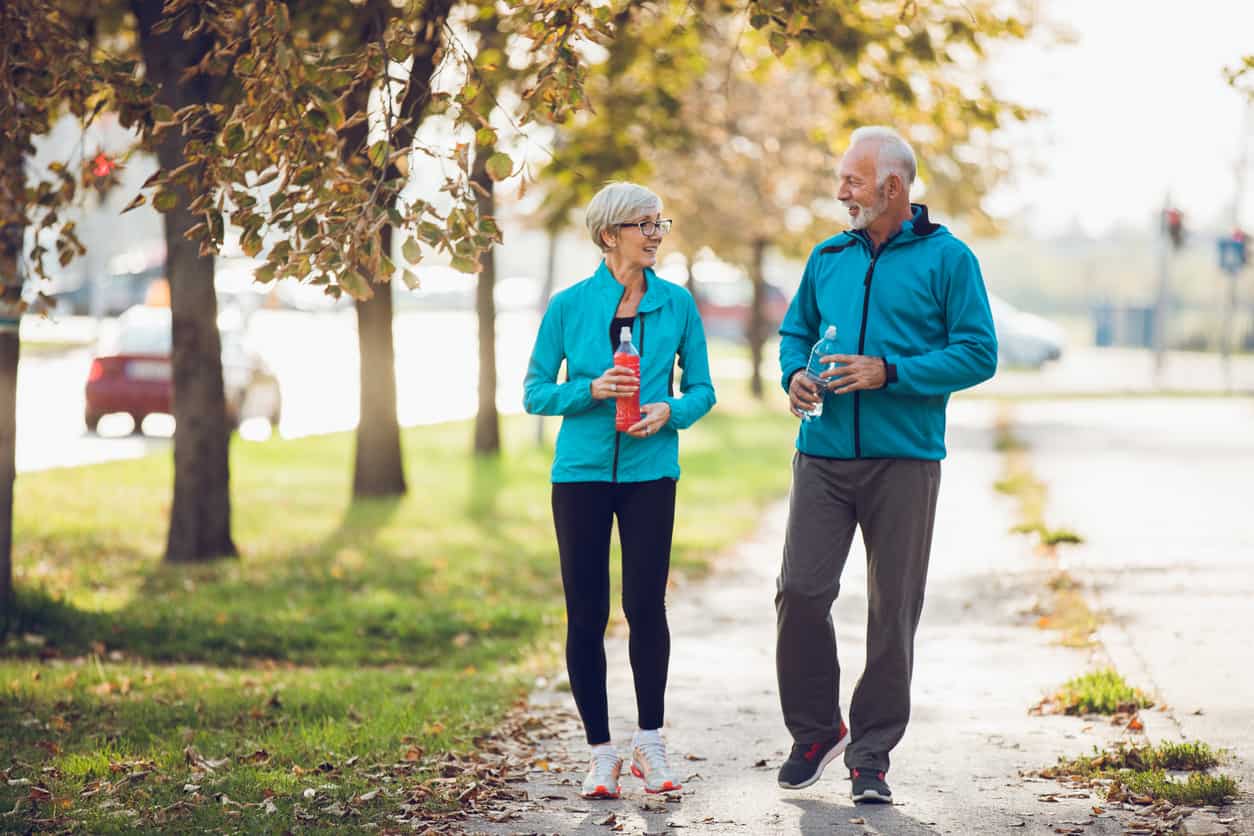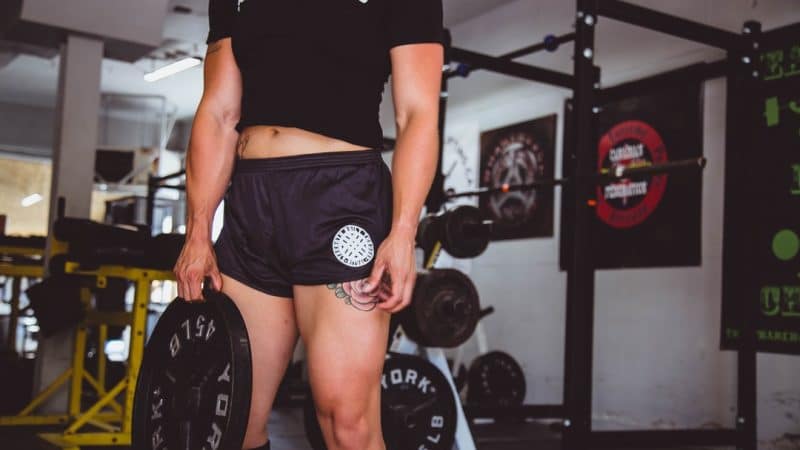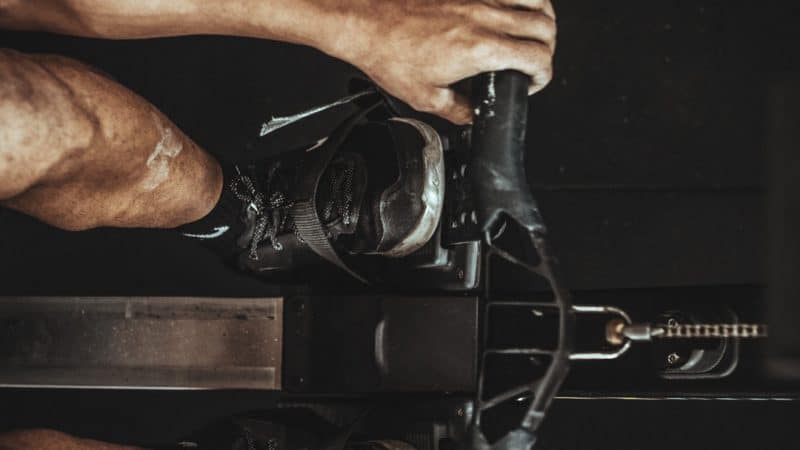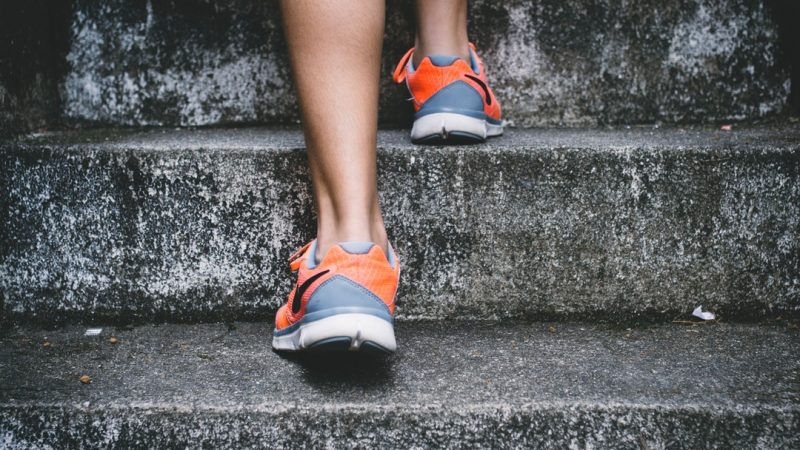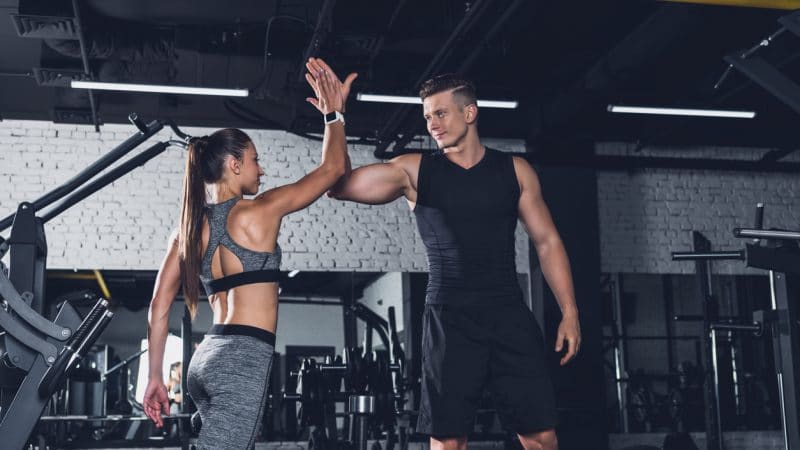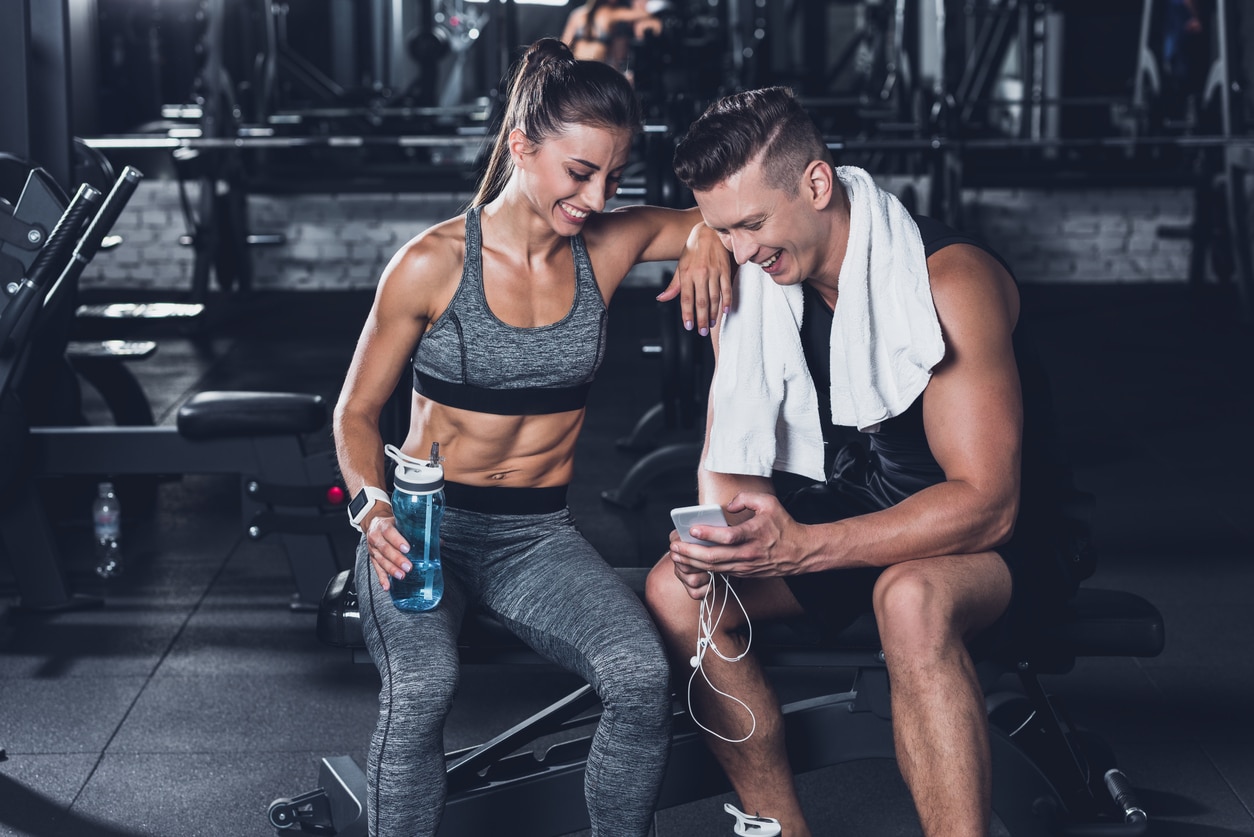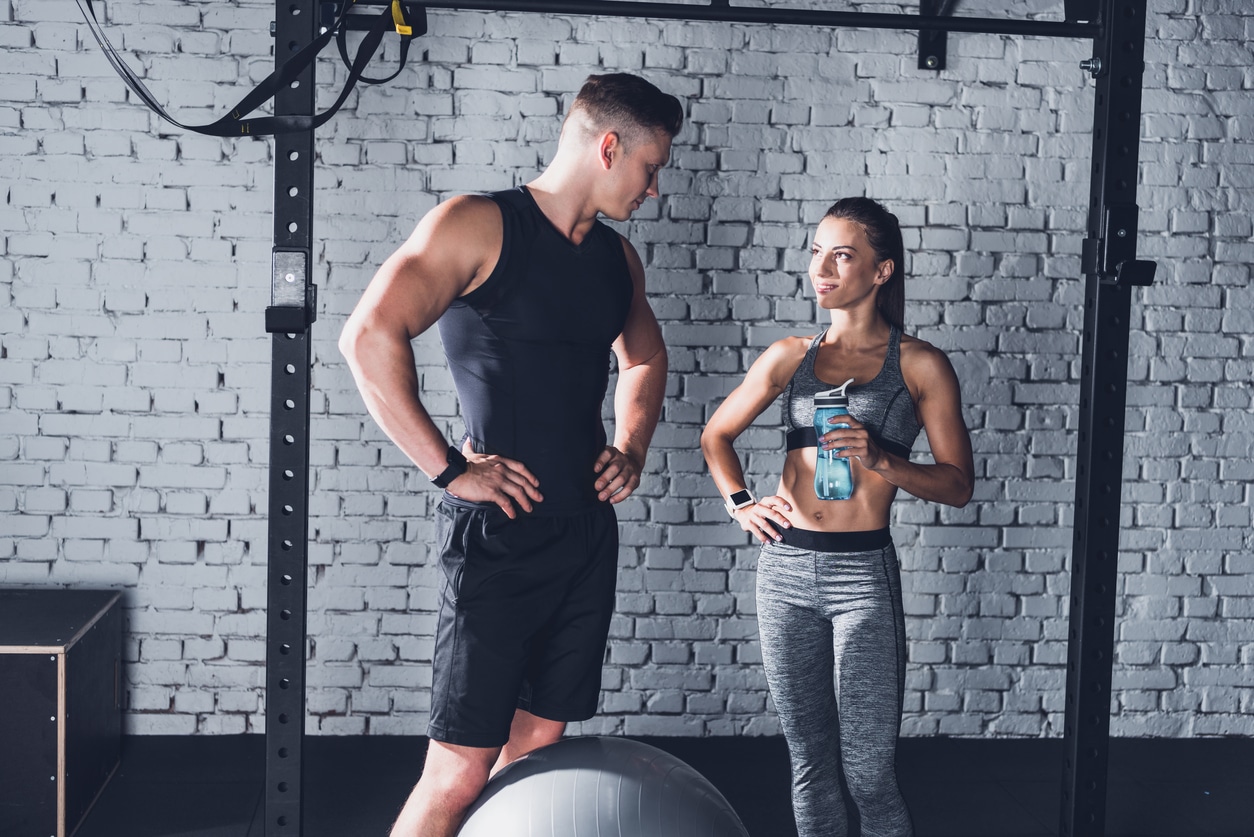Welcome To Our Blog
ENJOY THESE READS
This Is the Best Time of Day to Exercise For Better Sleep
This Is the Best Time of Day to Exercise For Better Sleep
The link between better sleep and exercise is well known. We’ll tell you the best time of day to exercise so you can rest easy and wake up refreshed.
As well as whole host of benefits, from weight control to fighting depression, exercise is also important for getting a good night’s sleep.
In fact, just 30 minutes of exercise three times a week was enough to improve sleep quality for sedentary women suffering from insomnia.
So, the jury’s in – working up a sweat during the day is key to sleeping soundly at night. But, is the effect is the same regardless of when you exercise? After all, it’s not unreasonable to assume that a late night exercise session might leave you too wired to fall asleep.
While it is true that the timing of your workout can have an influence on sleep, there are lots of different factors to consider. Read on to find out the best time of day to exercise for better sleep.
The Connection Between Exercise and Sleep Quality
It’s safe to say there’s little debate over the fact that exercising helps you sleep better.
In a recent poll, the National Sleep Foundation found that up to 67 percent of exercisers report getting a good night’s sleep. Only 39 percent of non-exercisers were able to report that they experienced the same high sleep quality.
And, the more intense the workout out, the bigger the difference. Seventy-two percent of vigorous exercisers said that they rarely or never experienced symptoms of insomnia. In contrast, 50 percent of non-exercisers said that they often wake up early, while 24 percent experience insomnia nearly every night.
Further research studied over 3,000 adults who tried to complete the recommended 150 minutes of physical activity each week. These participants showed a 65 percent improvement in sleep quality. They also reported feeling less sleepy during the day.
And, this effect runs both ways too. Getting enough sleep means that you feel well-rested the following day and have enough energy to exercise. On the other hand, feeling tired after a bad night’s sleep is more likely to make you skip your workout.
But, what’s the best time of the day to get active for optimum sleep quality? Here, we compare how exercising in the morning, afternoon and at night affect how well you sleep.

Working Out in the Morning
Many people favor exercising in the early hours because it ensures that you’ve got your workout in before the demands of the day take hold. And, making the effort to wake up early and work out means you’re sure to reap the benefits of better-quality sleep.
In fact, working out in the morning has the added bonus of even deeper sleep at night. One study compared participants who worked out at 7 AM, 1 PM, and 7 PM for three days per week. Those who worked out at 7 am experienced longer, deeper sleep than the other exercise groups.
The same study also found that morning exercise has a greater effect on reducing blood pressure. During sleep, your blood pressure dips by around 10 to 20 percent.
The 7 AM exercisers experienced a 25 percent drop at night and a 10 percent reduction in blood pressure throughout the whole day. This drop in blood pressure is associated with deeper sleep as it one way that the body restores itself during the night.
And, if you exercise outside in the morning, you’ll also benefit from a dose of sunshine. Not only does this boost your vitamin D levels, but it also helps regulate your circadian rhythm for a more consistent sleep/wake cycle.
Working Out in the Afternoon
If hitting the gym at the crack of dawn isn’t for you, don’t worry. Working out in the afternoon also has benefits, for both your performance and your sleep quality.
By the afternoon, your body has had more of a chance to warm-up. In fact, it’s one or two degrees warmer than when you first get out of bed.
As a result, your muscles can work more efficiently and there’s less chance of you injuring yourself. You’ll body will be supple and more flexible. Dance steps will come easier and you’ll be more adept at complex full-body movements like swinging a tennis racket.
In addition, afternoon workouts can also help you fall asleep more quickly and wake up less often during the night. This is because exercise raises your body temperature for around four or five hours. Following this period, your core temperature decreases, sending a signal to your body to start preparing for sleep mode.
Exercising in the afternoon is also a great way to release stress and tension after a hard day at work. Focusing on the physical later in the day allows your body to take over from your brain. This then reduces the possibility of being kept awake at night by an anxious or busy mind working overtime.
Working Out at Night
Maybe exercising in the morning isn’t for you. And perhaps an afternoon workout is impossible with your schedule. Whatever your reasons, many people find a late night sweat session the most convenient for them.
But, does late night exercise have the same positive effect on sleep quality? Or, is it possible that working out before bed actually negatively effects your sleep?
There’s no single answer to these questions. It can depend on the workout you do, but when to exercise depends more on your individual reaction.
For example, doing yoga and Pilates at night is said to be beneficial for those kept awake by stress. This is because of the stretching movements and focuses on breathing help you to relax and unwind before bed.
Also, strength training at any time of the day has been found to improve sleep quality. That said, the time of day that you lift weights does make a difference to how your sleep improves.
Those who get their pumps and curls out of the way in the morning tend to drift off to sleep quicker than night exercisers. But, those who pump iron at night wake up less often and sleep better overall.
But, what about cardio before bed? It’s logical to think that a high-energy workout that has your heart pumping and increases your body temperature is not the way to ease yourself into a pre-sleep state. And it’s true – for some people exercise before sleep can cause insomnia.
But, that doesn’t mean that night-time cardio should be off-limits. The National Sleep Foundation found that exercisers report improved sleep regardless of when they worked out. In fact, in one study, male cyclists rode stationary bikes for three hours up until 30 minutes before bedtime and had no trouble sleeping.
Make Your Workout Schedule Work for You
To reap the many benefits of exercise, improved sleep included, your workout schedule must have all of ‘the three Cs’ – commitment, convenience, and consistency.
Commitment means making a plan and sticking to it. But, just as your plan is individual to you, so is your idea of convenience, as is how you can ensure consistency. If rolling out of bed and into the gym is the only way you can stay consistent, great. But, if it’s convenient for you to work out at 9 pm and you sleep well afterwards, don’t feel you have to change your routine.
Likewise, if you find that your workout schedule isn’t working for you, don’t be afraid to change it. Many people swear by working out first thing as there’s less going on to side-track your best efforts to get a workout in. But, if you feel sluggish and tend to struggle through your morning workouts, don’t feel obliged to continue exercising early.
You might find that you feel more energetic in the afternoon or evening. Not only is your body temperature higher during this period, but your endurance also peaks around this time of day. And, getting outside for a mini workout at lunchtime is also a great way to boost your afternoon productivity.
Feel free to experiment with exercising at different times of the day and use an activity tracker to analyze your sleeping patterns. This way, you’ll know for sure which time of day is best for you to exercise.
And, if it’s more convenient to work out later, but you experience reduced sleep, try playing around with your schedule. Move your workouts around by half an hour or so and see what time works best for you. After some trial and error, you’re sure to find when to exercise for the best sleep quality.
The Best Time of Day to Exercise for Better Sleep
Some people are firmly in the early-exercise camp. Others say that a moonlit jog is the only time to get in their daily activity.
Whichever side you’re on, you’ll be pleased to learn that the best time of day to exercise is whenever it’s most convenient for you. And, whatever time of the day – or night – you prefer to exercise, you’ll still sleep soundly come bedtime.
Our 21 Day Body Transformation Challenge combines diet and exercise to transform your look. If you want to turn heads for the right reasons, find out more here.
10 Workout Motivation Tips to Avoid Fitness Fatigue
10 Workout Motivation Tips to Avoid Fitness Fatigue
Everyone starts working out with a lot of dedication. Unfortunately it can fade fast. These are our best tips for workout motivation to meet your goals.
Working out isn’t something you can do every once in a while or whenever you feel like it if you really want to see results. It requires you to show up every single day. You have to be dedicated to your workout routine, learn how to create healthy eating habits, and start taking better care of yourself as a whole.
That’s when the physical and mental transformations begin to happen.
However, it is common for people to experience some ups and downs on their fitness journey – like struggling to find workout motivation or stick to their diet. Everyone goes through these things at one point or another, but it’s on each person in the gym to push past them.
If you’ve been having a serious lack of motivation to get in the gym and work toward your goals, use these tips to build your drive back up.
1. Put on Your Workout Clothes
This is the simplest thing you can do to get your mind into workout mode. Putting on your workout clothes doesn’t mean that you have to go to the gym right away, but it does help significantly in making sure you show up.
If you seriously don’t feel like going to the gym today, try this trick. Grab your favorite workout outfit, put it on, and see how you feel once you look in the mirror or even in the next hour or so. You’ll be surprised how much of a difference this little trick makes.
2. Try Different Kinds of Workouts
Maybe the issue with your workout motivation right now isn’t that you’re not showing up to the gym, but that you can’t wait to leave once you’re there. Maybe you’re bored with your workouts or feel like they’ve plateaued.
The quick fix for this is to switch up your routine.
Try out different kinds of workouts until you find what engages you the most. For some people, there’s no better way to do cardio than to take a spin or Zumba class. For others, lifting becomes a lot more fun in a CrossFit gym or some other group setting
Keep in mind you don’t have to do one single kind of workout, either. It’s possible to do yoga on Monday, lift on Tuesday, then run on Wednesday and still reach your goals!
3. Stop Comparing Yourself to Others
No matter where you are or what you’re doing to exercise, remember that you’re there to work on you. This means you have to focus on what your body needs to do to get a good pump and stop paying attention to what other people are doing.
You won’t be as buff as the strongest person in the gym right away and you’re not going to be as fast or as slim as them, either. More so, you have to keep in mind that they were once in your shoes as the newbie to working out and being fit.
Work on putting all your energy into your fitness journey instead of others’. This will do wonders to motivate you to keep going and work harder than you have in a while.

4. Stay Hydrated All Day Long
Comparing yourself to others is a mind game that does you no good. But, there could be a physical reason why you’re not feeling motivated to workout – like the fact that you’re dehydrated.
Water plays a significant role in every single thing your body does. It affects your mental focus, energy levels, digestion, and how well you rest, too.
If the body can’t perform such functions like its supposed to, it’s definitely not going to feel up for the challenge of working out. When you drink a good amount of water throughout the day, though, you increase your chances of getting it done!
5. Focus on That “Pumped Up” Feeling
Speaking of getting it done, take a moment to think about how amazing you feel when you finish a workout. There’s nothing that can match that sense of accomplishment when you walk out of the gym super sweaty or with your muscles shaking a bit.
Not to mention, the build-up of your pump and reaching that sense of accomplishment is also pretty cool. There’s something special about walking into the gym with low energy and walking out feeling like you can take on anything – especially if you’re making progress in how heavy you’re lifting or how much endurance your body has as a whole.
6. Take Advantage of Your Rest Days
Here’s something else to consider: maybe your motivation to go to the gym hasn’t disappeared, maybe it has completely run out (for now).
That’s what happens when you overwork your body and push yourself too hard. There’s a big difference between being dedicated and showing up, and not knowing how to listen to what your body is telling you.
You need to have a rest day.
Even if it’s an active rest day, you have to be able to let your body relax. This is the precious time that your muscles need to rebuild themselves after working so hard in the gym. It’s also your chance to do something with your time other than working out that benefits you in a different way.
7. Reward Yourself with Cheat Meals
One of the best things about rest days is that this is usually when people have their cheat meals. Cheat meals help you curb cravings and stick to your long-term goals. They’re also a great reward to give yourself after crushing your workouts, and they serve as a nice boost of motivation as cheat day gets closer and closer.
Keep in mind that there’s a difference between enjoying one well-deserved cheat meal and going completely off the rails, though. You risk guilting yourself and losing even more motivation to workout if you take cheat day too far. But, enjoying it mindfully offers many benefits.

8. Remember Why You Started
Another way to find the workout motivation you need is to take a look at the goals you’ve written down. Keep these at the front of your mind as you do every single rep, when you sit down to eat, and as you go about the rest of your day.
Whether you’re trying to grow 10 pounds of muscle or lose 20 pounds of fat, you have to remember why you started. This is the motivation you need when you’re thinking about skipping your last set or when you’re trying to cheat your reps. It’s what makes you show up at the gym in the first place and reminds you to work hard while you’re there.
9. Change Your Perspective
As smart as it is to remember why you started, you may discover there’s a deeper issue at play if you’re having to find workout motivation every single day. Working out really shouldn’t be a chore; it should be something that you genuinely want to do instead of a task that you feel obligated to complete.
If this isn’t the mindset you have right now, it’s time to change your perspective. Take a step back for a second and try to identify what it is about working out that you don’t like. Figure out the barriers you’ve created in your mind, then work past them.
Find ways to improve your relationship with working out. Do workouts that are more enjoyable to you or at least try not to be so hard on yourself.
10. Have Someone Hold You Accountable
The final way to boost your workout motivation is to have someone do it for you. Not to say that you should rely on them, but rather, commit to showing up for them as well as for yourself.
Get a gym partner to hold you accountable when you’re trying to skip out of a workout, or even better, hire a personal trainer! This is someone you can lean on when you’re really not feeling your workout for the day.
But, you’re still the one who has to put in the work.
That work does become a lot easier to do when you have someone making sure you show up and lifting you up throughout the workout. They’re there to offer you support, call you out when you’re cheating yourself, and remind you of the inner strength you have to keep going.
How to Get the Most of Your Workout Motivation
You can have all the workout motivation in the world and still struggle to get the results you’re looking for. That’s because you have to know how to train your body once you actually get into the gym.
This takes a little time to figure out. You have to be patient as you learn how to build a mind-muscle connection and create routines that best target each muscle group, not to mention understand which supplements to take and when.
Thankfully, you don’t have to take all of this alone! That’s what we’re here for.
Our 21 Day Body Transformation Challenge combines diet and exercise to transform your look. If you want to turn heads for the right reasons, find out more here.
Walking for Weight Loss: How to Get Your Steps In and Shed Pounds
Walking for Weight Loss: How to Get Your Steps In and Shed Pounds
Those people who obsess about getting their steps in have a good reason. Here’s how walking for weight loss works and some tips to make it work for you.
When you want to lose weight, you’ve probably researching gym memberships and crash diets. But sometimes all it takes is a few steps. Literally!
If the thought of high-impact exercise is overwhelming, walking could be the solution. Walking for weight loss is effective and low-intensity. This could be the perfect exercise regimen if you’re starting your fitness journey.Â
A brisk walk can reduce stress, burn calories and build muscle-so why shouldn’t this be a part of your fitness plan?
Walking is a great form of physical activity that’s free and easily accessible for most people.
However, there are certain factors that can improve your results. How often you walk, at what speed and where you walk all play a factor.
This article explores how you can walk your way to fitness!
How Long to Walk Each Day for Weight Loss
So how often do you need to walk to lose weight? Less than you may think. A good goal is 30 minutes per day for weight loss.
At a brisk pace, the distance you could cover in 30 minutes cover should be 1.5 – 2 miles or 3,000 to 4,500 steps.
Some days are busier than others so feel free to walk more or less on some days. By the end of the week, you should have walked for at least 150 minutes.
How Fast Should I Walk for Weight Loss
The great thing about walking for weight loss is that you don’t have to overexert yourself. Walk at a moderately brisk pace. A great investment would be a heart rate monitor. There are plenty of smartwatches that have them built in.
While walking, your heart rate should be at 60 – 70 percent of your maximum heart rate. You should be breathing heavily enough to make speaking difficult.
Keep in mind that the higher your heart rate, the more calories you burn. You’ll get more benefit by increasing the intensity for 10 minutes. But listen to your body. If you need a break, take one. Ignoring your body’s signs can cause injury later.
If you’re new to exercise, start with shorter periods and build up over time. You could also designate three days each week for your lower-intensity walks.
When it comes to health and fitness, consistency is key. Make it your goal to never go three days without taking your walk. If you find yourself unmotivated, this podcast might inspire you.
This will help improve your fitness level and your metabolism. Your body will begin to learn your new habits. Mental health is just as important as physical. If you find yourself worn out, take a day off.
How Can I Fit Walking in My Schedule?
We get it. Life is busy! Here are some tips to make walking fit in your schedule:
- Break it up into walking two or three times a day for 10 minutes at a time.
- Break it up into bigger chunks and take your walks twice or three times per week
- Make it a family activity. Take a walk after dinner and use this time to bond with your family.
- Start a fitness challenge at work to motivate co-workers. Walk as a group during lunch or other breaks. Accountability can help you reach your goals.
- Park further at the grocery store! You’d be surprised how many steps you can get in large parking lots.
- Skip the elevator. Stair climbing burns more calories than you may think.
- Take a brisk walk on your lunch break or after dinner. This will help with that post-meal slump.
- Make casual meetings walking meetings instead of meeting in a conference room. Having a change of scenery might even help with creative thinking.Â
Make a plan and write it down! If you fall off for a day or so, don’t stress out. You can always pick back up where you left off tomorrow!
How Walking Burns Calories
If you’re trying to lose weight, there’s a simple formula that you need to know. Weight Loss = Calories Burned > Calories Consumed. You need to burn more than you eat.
Walking is one of the activities you can do to increase the number of calories that you burn.
Think of calories as energy for your body. You need calories for daily activities like moving, breathing, and sleeping. However, some people eat more calories than their body needs.
People who are physically active will burn more calories and lose weight. But, everyone doesn’t have the time to lift weights at the gym or cross train. Simply finding a little time to walk each day can help you achieve your weight loss goals.
Let’s break it down. Walking for 30 minutes equals 1.5- 2.0 miles. This will burn approximately 200 calories, depending on your sex and weight.
The more you weigh the more calories you will burn. Your body is exerting more energy to exercise so you will burn even more on a 30-minute walk. Another way you can increase the number of calories burned is by adding weights. You can also walk on hills or on an inclined treadmill.
A lot of beginners become discouraged when they aren’t able to run for long periods of time. Yes, running will burn more calories, but only about 23 more calories per mile.
Don’t worry about running quite yet, walking can burn a significant amount of calories.
If you choose to take longer walks, this can increase your calories burned as well. During the first 30 minutes of exercise, your body burns sugar for energy. After 30 minutes, your body starts using fat as fuel.
Make it a goal to take at least on extended walk per week. This will build your endurance and help you get rid of fat cells!
How Walking Builds Muscle
Most people are unaware of the benefits of building muscle. Building muscle doesn’t always mean you’re training for a bodybuilding competition. Building lean muscle can help you lose body fat.
Even though walking doesn’t involve barbells and weights, it still helps build muscle. It can also reduce age-related muscle loss. This helps you keep more of your physical strength and reduce age-related weight gain.
You may have noticed that walkers have strong and toned legs. Walking builds, shapes, and tones the legs and buttocks. If you’re consistent in your walking, you’ll notice stronger calves, quads, and hamstrings.
This isn’t the best way to “buff up” though. If you want to pack on some serious muscle, consider weight training.
How Walking Improves Mood
Been in a funk lately? Exercise may be the last thing on your mind, but it could actually help you feel better. Exercise can do wonders for your mood.
All kinds of physical activity can decrease feelings of stress, depression, and anxiety. It makes your brain more sensitive to the hormones serotonin and norepinephrine.
These hormones relieve sad feelings while releasing endorphins, which make you feel happy!
It doesn’t take a rocket scientist to realize that if you enjoy a physical activity, you’ll continue to do it.
This makes walking an excellent choice. It’s a moderate-intensity exercise that won’t be too physically demanding. Over time, you’ll look forward to your scheduled walk and feel great about doing it.
How Walking Keeps Weight Off
Let’s fast forward a bit. You’ve been walking for some time now and you’ve lost weight. You’re happy with your results and simply want to keep the weight off. Walking can play a major role in helping you maintain weight loss.
Remember, people who exercise frequently are usually better at maintaining their weight loss.
When you lose weight, your metabolic rate will drop. This means it will be harder to keep the pounds off. Walking can help prevent muscle loss and help you maintain your results over time. Lean muscle we mentioned earlier will also help you burn more calories, even at rest.
To maintain a stable weight, aim to walk at least 150 minutes per week. Increase this number if you’ve lost a considerable amount of weight. 200 minutes per week should be a good goal for you.
10,000 steps per day is a good goal for most people. Stay active by walking throughout your week so that your progress isn’t lost.
How to Start Walking For Weight Loss
So where do you start? Walking for weight loss can help you improve your muscle, reduce fat, increase mood and more.
The bottom line is that physical activity can help you live a healthier, longer life. 150 minutes of moderate-intensity exercise like walking per week is ideal.
Walk for around 30 minutes at a time at a brisk pace. When this becomes easier for you, go the extra mile (pun intended). You can only reap more health and fitness benefits.
Remember, every little step helps, so start small and increase the amount you walk over time.
Our 21 Day Body Transformation Challenge combines diet and exercise to transform your look. If you want to turn heads for the right reasons, find out more here.
Work Harder, Get Stronger: How to Start Weightlifting
Work Harder, Get Stronger: How to Start Weightlifting
The secret to getting stronger isn’t much of a secret. It’s weightlifting. We’ll show you how to start weightlifting and begin your journey to a stronger you.
Weightlifting has been one of the most popular fitness methods, for good reason.
Weightlifting does more than bulk you up. Strength training has a myriad of benefits; you gain more strength, you burn fat, and you’re able to keep more fat off for a long time.
Here’s the catch: many newbies aren’t sure where to start. Here’s how to start weightlifting.
To PT or Not to PT
When a beginner starts their weightlifting journey, they often debate about hiring a personal trainer, or a PT.
There are many benefits of hiring a personal trainer. A trainer can identify your current fitness stance and fitness goals and can develop an effective weightlifting routine for you.
The Benefits of Hiring a Trainer
Beginners can easily get lost in the myriad of weightlifting machines, weight types, and lifting techniques. Trainers are experienced in all of these areas.
Trainers are also your best bet to ensure you lower your injury risk and are in correct form.
Personal trainers are also beneficial if you plan on competing in competitions or if you need to lose an exceptional amount of weight. Trainers can provide fitness and diet tips to get you in the best shape of your life.
Trainers also closely monitor your routine, your progress, and provide constant motivation for slackers.
When to Not Hire a Trainer
What if you have a decent amount of strength training experience but are simply altering your weightlifting regimen? You’ll still benefit from a trainer. But if you’re comfortable with lifting, you can try developing your own fitness routine.
More PT Information
If you have regular (once a week) personal training sessions on top of solo workouts for at least a year, you’ll gain enough education and comfort in your fitness routine.
While hiring a trainer is almost guaranteed to give you the results you want, by going out and conquering your fitness goals, you’ll likely still gain the results you want. So hiring a trainer is a choice that you should consider.

How Much to Lift?
The weight you lift depends on the results you want.
Contrary to popular belief, you don’t have to lift extremely heavy to increase your strength, tone your body, and even bulk up.
Weights are separated into a few categories:
- Light
- Moderately Light
- Moderate
- Moderately Heavy
- Heavy
Here’s a more detailed explanation of each weight type.
Light
These are weights you can pick up with ease. You won’t feel any strain and can even make it throughout your full set without feeling any tension.
Moderately Light
Differentiating between moderately light and light weights are difficult at work. With moderately light weights, you should still be able to pick up the weight with ease. But at the end of your set, you’ll feel a little bit fatigued.
Moderate
When you first lift a weight at moderate strength, you can easily lift the weight but you will have to use extra effort compared to the previous two weight types. You’ll likely feel fatigued after your set, but not completely exhausted.
Moderately Heavy
This is where most people train. You’re able to pick up the weight but still feel like you need to make an effort for each rep. But you’re still able to achieve correct form and have a lower injury risk.
Heavy
It’s ill-advised beginners lift heavy on their own without the aid of a trainer.
You’re not able to easily lift the weight and have to use all of your strength and effort to even do a rep. You’ll find doing each rep difficult and will feel completely exhausted after your set.
Which Weights Should You Lift?
For best results, you should lift all weights. Different workouts call for different weight types. You’ll also notice certain muscles can lift heavier than other muscles.
For example, you probably notice you can lift moderately heavy when you do bicep curls. But you have to decrease your weight significantly when you lift shoulders.
That’s because most people, men and women, are used to lifting with their arms and not lifting overhead.
The Different Types of Weights
When most beginners think of weightlifting, they usually only think of dumbbells and bars. While these are crucial weight types, there are many types of weights and they all have their benefits.
Here are the most basic weight types:
- Barbells
- Dumbbells
- Machines
- Cables
- Kettlebells
- Standalone weight plate (the weights that go on machines – you can also use these alone)
Which ones should you use? You’ll have to take your fitness goals and weight preferences into consideration. But beginners should try each weight type.
If you’re working legs, deadlift with barbells. When squatting, use kettlebells or a weight plate.
Then, use dumbbells for lunges. There’s a myriad of hamstring exercises you can do on the cables. There are also many machines that increase your leg strength, such as the leg press.
After you experiment with all weight types, you can substitute certain weight types with those you prefer.

Reps and Sets
“Reps” and “sets” appeared a few times in this article. As a beginner, you may not know what this teams. When you start weightlifting, you’ll realize how often you use this information.
A rep is each time you lift a weight. Reps are often combined with something called a set. Most weightlifters do two or more sets of a specific number of reps.
For example, let’s say you do 20 reps of ab crunches. You break the 20 reps up into two sets. This means when you do ab crunches, you do two sets of 10 reps.
How Many Reps and Sets?
Now that you know what reps and sets are, you’re probably wondering how many you should do.
Well, this depends on the workout and the weight you’re lifting.
Let’s make this easy and break up the reps-weight ratio in three categories: light, moderate, and heavy lifting.
Since heavy lifting requires lots of strength, several reps aren’t required for heavy lifting. But you won’t get results with light lifting unless you increase your reps.
Here are general numbers to remember:
- Light lifting: 40-50 reps
- Moderate lifting: 20-30 reps
- Heavy lifting: 5-10 reps
You can break the rep count in as many sets as you need. Unless you’re lifting heavy, most lifters do sets of 10-15 reps.
How Reps and Weight Affect Your Results
When you start lifting and make fitness friends, you’ll hear a ton of advice. Some people will tell you to lift lighter with more reps or lift heavier with fewer reps.
The truth is, both methods are effective. But every weightlifter is different.
Lifting heavy with fewer reps forces your body to use maximum strength. This results in quicker results; your strength will increase, you’ll bulk up, and get toned quickly.
But lifting only at your maximum not only increases your injury risk, but you’ll be less flexible. If you decide to jump into maximum lifting, go back and forth between heavy lifting and using lighter weights or resistance bands.
So you may think lifting lighter weights with more reps is the solution. But this depends on the results you want. If you want leaner and toned muscles, lifting light is the way to do it. You won’t bulk up or increase your strength as quickly.
This method is more challenging for beginners than they would expect. Lifting light requires endurance – something you develop when you gain experience lifting.
It’s easy to immediately feel fatigued after the 25 rep mark, especially when you’re supposed to reach 40 or 50 reps for one exercise.
No method is better than the other. It all depends on your weightlifting goals.
Creating a Routine
Finally, it’s time to create a routine. Many weightlifters focus on one area, such as arms or abs, in one day.
It’s also important to do cardio; have a cardio day or two each week and do about 10-15 minutes of cardio after lifting to burn more calories.
And never forget to stretch! Stretching decreases your risk of injury and you’ll improve your flexibility.
First, decide what you’re training. To start, you can divide your days between upper body (arms, chest, and back), core (abs) and legs (hamstrings, glutes, and hips).
After you’re comfortable lifting, you’ll know your muscle groups and can devote days to one or two specific muscle groups.
Then, take about five minutes and stretch out those muscles.
And now you can start lifting! To start out, don’t go too intense. Take about 15 or 20 minutes to lift.
End with a little bit of cardio. Once you become more experienced, you can stop post-workout cardio or replace it with light lifting or resistance bands. The goal is to burn extra calories but cool off from the intensity of weightlifting.
Now You Know How to Start Weightlifting
Our 21 Day Body Transformation Challenge combines diet and exercise to transform your look. If you want to turn heads for the right reasons, find out more here.
Cardio For Weight Loss: 6 Crucial Facts To Keep In Mind
Cardio For Weight Loss: 6 Crucial Facts To Keep In Mind
If you’re just establishing your exercise routine, here are some crucial facts about cardio for weight loss. Keep them in mind when developing your routine.
If you immediately turned to cardio when you started trying to lose weight, you’re not alone. When it comes to weight loss, it seems like most people associate the treadmill or the track with their path to a smaller waistline.
Cardio is definitely an important part of any workout routine, but there are some important things to keep in mind if you want to use cardio for weight loss. You have to make sure that you plan your workouts effectively to get the maximum benefit.
When you’re developing your routine, keep these six crucial facts in mind. They’ll help you get the results you want!
1. You Can’t Just Do Cardio
This first fact might seem like a weird choice to start off with. After all, isn’t the whole post about using cardio for weight loss?
Here’s the thing, though — if you want to lose weight in a healthy way, you can’t have a workout routine that’s 100% cardio. You’re going to need to incorporate strength training into your schedule if you really want to see results.
Strength training helps to build muscle mass, which will help you out down the line by speeding up your metabolism and burning additional fat. Basically, the more muscle you have, the more calories you’ll burn on a regular basis.
Great, right?
If you’re only doing cardio, on the other hand, you won’t just be burning fat — you’ll be burning muscle, too. The last thing you want to do is to burn what will help you lose weight.
If you really want to go all in for both your strength training and your cardio, we recommend putting those workouts on separate days. (Think cardio on Monday, strength training on Tuesday.) If you really want to do both on the same day, though, do your strength training before your cardio. Strength training uses more energy, so you’ll need to be at 100% before you start.
2. You Don’t Have To Stay In The Fat-Burning Zone
We’ve all fallen victim to that pesky little display on the treadmill, or checked our Fitbits religiously to make sure that we’re in the golden “fat burn” zone. What does that even mean, anyway?
It’s easy to believe that you won’t burn any fat unless your heart rate is in that magic zone. That’s not completely true, though.
The name for the zone is a little misleading. It’s not that you’ll only burn fat in that zone, it’s that a larger percentage of the calories burned comes from fat. You’ll still be burning fat in the cardio or peak zones.
What’s most important isn’t the percentage of burned calories that come from fat. If you’re going to pay attention to one of the numbers lighting up your screen, it should be total calories burned. The number of calories you burn is way more important when it comes to the big picture.
And speaking of the number of calories you burn…
3. You Don’t Have To Burn 500 Calories
We can understand where this number came from. It’s a nice, round number, it sounds like a lot, and people feel accomplished when they can say that they burned 500 calories over the course of their workouts.
What’s problematic, though, is when people think that they have to burn 500 calories for their workouts to have any effect. Depending on the type of workout you’re doing, your cardio workouts can burn fewer than 500 calories and still be great for you.
High-intensity interval training (HIIT), for example, is a series of high-intensity workouts done in short bursts. You might not burn 500 calories during your thirty-minute workout, but you’ll keep burning calories at a higher rate for hours after you leave the gym.
4. Your Workouts Don’t Need To Be Long
When you think of cardio, do you think of long runs that take a ton of time out of your day? There’s a common misconception that your cardio has to be long, slow and steady to mean anything.
Even if you don’t have an hour to spare for your workout, go for a HIIT workout instead. The quick workout will still get your heart rate up, burn calories, and give you the cardio training that you need.
People who swear by the treadmill can still get the benefit of a shorter workout. Doing shorter sessions at a higher intensity will help you get more out of your workout in less time.

5. You Should Snack Before Your Workout
There are lots of runners who enjoy waking up early in the morning and going for a run first thing. That’s a great way to start your day…as long as you eat something before you head out the door.
When you’re in a calorie-burning mindset, it’s easy to think that to burn more calories, you shouldn’t eat before you workout. If you don’t eat ahead of time, your body has to burn off the fat that’s already on your body for energy, right?
Nope, not for cardio. Your body needs something to fuel it, and it will turn to the carbs and fat in your muscles, not the fat in your fat cells.
We’re not saying to eat a full meal and then go for a run — just eat a light snack to give your body something to work with.
6. You Still Have To Eat Right
Speaking of eating, you still have to have a proper diet if you’re planning on using cardio to lose weight. Just running an extra mile every time you opt for a cookie instead of a carrot stick won’t really help you out.
If your diet is still poor, doing lots of cardio will only do so much. Nourish your body with the right foods for the workouts you’re doing. For example, you incorporate a lot of strength training into your routine, make sure you eat enough protein.
Cardio combined with eating well can help you sculpt your body into the shape you want to see.
Use Cardio For Weight Loss Effectively
If you keep these crucial facts about cardio for weight loss in mind, you’ll be able to see better results. Make the most of your workouts and use your cardio effectively. Your body will thank you.
Our 21 Day Body Transformation Challenge combines diet and exercise to transform your look. If you want to turn heads for the right reasons, find out more here.
8 Mini Workout Tips To Try If You Have No Time To Exercise
8 Mini Workout Tips To Try If You Have No Time To Exercise
Too busy to exercise? Here are some mini workout routines to hack your weight loss plan even if your schedule shows zero downtime.
In between work, school, or taking care of the kids, you’re lucky if you find one second to yourself. You still want to exercise and stay fit, but your schedule is so busy that you just can’t seem to squeeze it in.
Only an alarming 23% of Americans get the exercise that they need. Don’t be a part of the population who struggle to work out. If you don’t have time–don’t worry.
Fortunately, you don’t need to spend hours on an elliptical just to get your daily exercise. Doing small exercises throughout the day only take a few minutes, and some can even be incorporated into your daily routine.
Who needs the gym to get in shape? Here are 8 mini workout tips you should try if you have no time to exercise:
1. Workout With Your Chores
Why not make chores your daily workout routine? Instead of dreading your chores, view them as part of an exercise routine. You may not think of chores as a workout, but the reality is that you’re doing work and getting physical activity.
Put extra effort into doing your daily tasks. Doing laundry involves heavy lifting, vacuuming your carpet works your arms and legs, and wiping down your bathroom can tone your biceps. Even something as simple as scrubbing the floor can give you an effective cardio workout.
2. Avoid Elevators
Yes, elevators are very convenient, but you don’t really need them to get where you need to go. Don’t take the elevator up to the eighth floor–go up the stairs instead.
Need more convincing to use the stairs? Simply climbing 2 flights of stairs per day can lead to a weight loss of 6lbs in one year. Now, just think how much weight you can lose if you climb 10 flights of stairs each day.
You can even try this exercise when you’re out shopping. Skip out on escalators when you’re at a store and work towards your weight loss goals on the stairs.
3. Break Parking Habits
Are you guilty of always trying to find the closest parking spot? Now is the time to stop that habit. Instead of searching for the spot closest to your destination, you should be looking for the farthest.
Parking far away forces you to walk a longer distance to the building’s entrance. If you have multiple places that you’re driving to that day, all that walking adds up. Just one simple adjustment can turn into an easy daily workout.
4. Take Advantage of Lunch Breaks
Maybe you’re stuck at work all day. By the time you get home, you have no time or energy left for your daily fitness routine. That’s why you should start taking advantage of your lunch breaks.
You might cherish your lunch break as a time when you can relax, have a bite to eat or chat with your coworkers, but you can also use this as a time to squeeze in a quick workout. You could go for a 20 or 30-minute walk outside your building depending on how long your lunch breaks are. Bring along a few coworkers and start a fun daily workout.
5. Don’t Drive to Work
Getting stuck in traffic during your morning commute is probably nothing new to you. But what if this irritating traffic can be avoided altogether? If you live close enough to your job, consider biking, jogging, or walking to work.
Spending all day behind your desk is just as bad as spending several minutes or hours behind the wheel. Your body just won’t get the daily workout it needs.
You could also try hopping off the bus or train early so you have a farther walking distance to your home or work. You might even find out that you’ll get to work on foot faster than if you were to take a vehicle.
6. Use Commercial Breaks to Your Advantage
Everyone knows that commercials are annoying–they interrupt your favorite shows and are incredibly boring. The next time you find time to relax in front of your TV, don’t sit through the commercial breaks. Make it a habit to get up and do an aerobic exercise while the commercials are on.
Commercial breaks are around a few minutes long and can occur several times during a show. Doing a variety of jumping jacks, push-ups, and crunches, as the commercials play can really make you sweat, and can even get you toned over time.
7. Learn to Multi-Task
Many people tend to avoid workouts because they have to get some other task done, but it’s really easy to do both at the same time.
Have to take your dog out? Go for a walk with him around the neighborhood. Maybe you’ve been meaning to get around to reading that book or finishing a TV show–read the book or watch your show while you’re on a treadmill or hitting the gym.
Having entertainment while working out can be your motivation to start incorporating a daily exercise plan into your busy schedule. Better yet, you’ll be accomplishing a task, while also reaching your fitness goals.
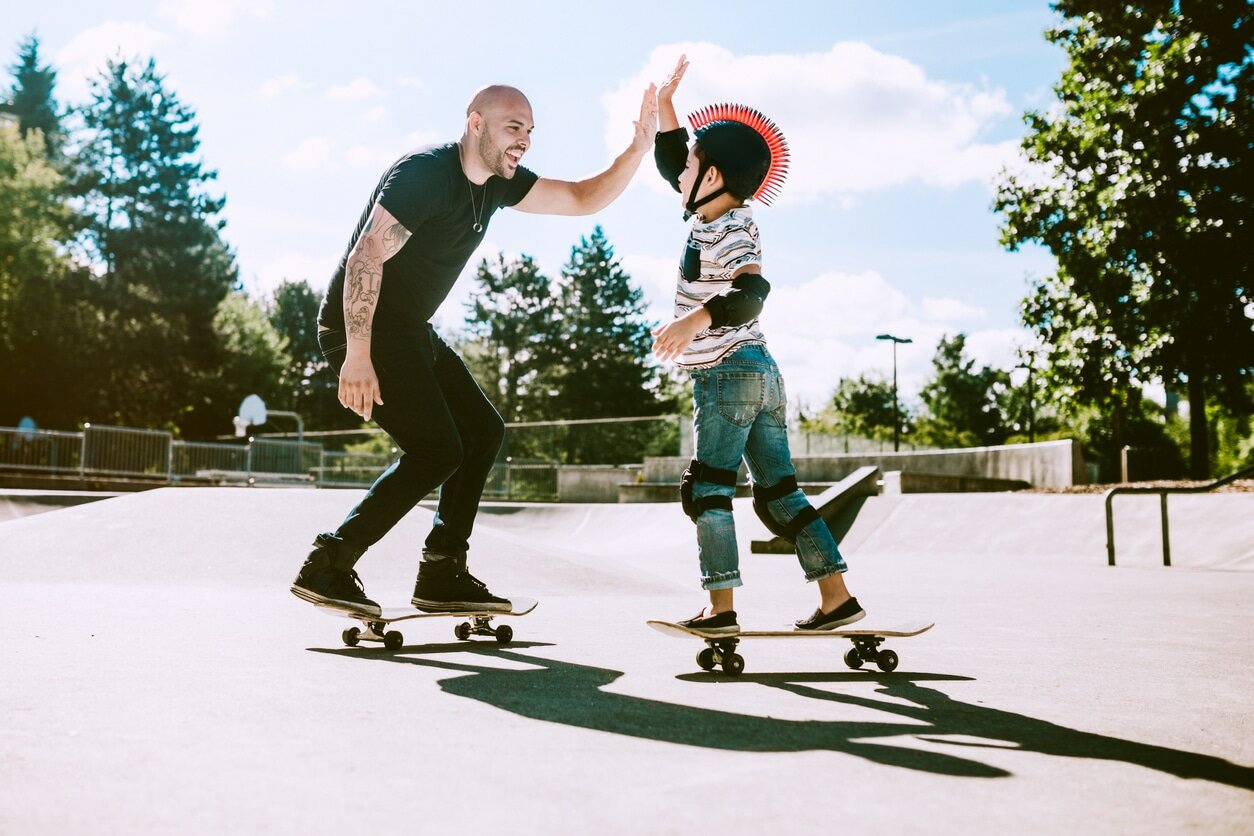
8. Have Fun with the Kids
Daily workout routines can be boring, but kids definitely aren’t. They’re bundles of energy, and never seem to tire no matter how many laps they run around your yard. Next time your kid wants to get outside and play, go with them.
Suggest playing a game of tag or catch. You’ll be surprised at how tired you are after the fun and games end. Not only will you get your heart pumping, but you’ll be having a great time with your kid.
You Can Still Get Fit with No Time to Exercise
Having no time to exercise isn’t an excuse for not working out. You don’t have to dread timely trips to the gym when you can do quick workouts throughout your day. Before you know it, you’ll notice yourself losing more weight and having more defined muscles.
Our 21 Day Body Transformation Challenge combines diet and exercise to transform your look. If you want to turn heads for the right reasons, find out more here.
10 Quick And Healthy Low-Carb Snacks That’ll Help You Ditch The Chips
10 Quick And Healthy Low-Carb Snacks That’ll Help You Ditch The Chips
Are you addicted to carbs? Here are some healthy low-carb snacks that will make you want to break up with those cookies and chips.
You’re out and about running errands. Then, all of a sudden, hunger pangs strike!
What do you do? Perhaps your first instinct is to grab a snack for a quick energy boost, such as a candy bar, cookie, muffin, or chips. If you’re trying to lose weight and keep fit, obviously none of these snacks will cut the mustard.
Thankfully, with a little bit of forethought, you can choose low-carb snacks at the grocery store that’ll not only provide great nutritional value but also keep you on the right track health-wise.
Here are 10 best low carb snacks you can chow down when you need to keep those hunger pangs at bay.
1. Nuts
Nuts can be ideal no carb snacks. They contain healthy fat, fiber, and protein all in a single package and most are packed with nutrients.
But there two things to keep in mind when it comes to eating nuts:
- Some nuts, like cashews, actually contain a sizable amount of carbs.
- Some people find it difficult to stop when they’re eating nuts.
Make a small pot every morning and gnaw at them all day. But don’t eat too much as the carbs may soon pile up. Carefully monitor your portion sizes.
Eat lower carb nuts like almonds and macadamia. Steer clear of cashews.
2. Seeds
The most readily available seeds are pumpkin seeds and sunflower seeds. Chia seeds and flax seeds are other amazingly nutritious low carb snacks.
Almost all their carbs are in fiber form, which won’t raise your blood sugar. And, as a rule, check the number of carbs in seeds when you buy some from the convenience store.
Store seeds in the fridge. Only take out the portion you want to eat at a time. If you carry them to work, use little snack-sized zip bags.
3. Deli Meat
Any cold piece of deli meat is good to have at hand. Leftover meatballs, leftover roast meat, sausages, bacon, etc. are all easy and healthy low-carb snacks.
Be sure to pick meat with minimal processing, like bacon with no sugar or honey, ham off the bone, salami/pepperoni with at least 98% meat or fat and minimal additives, and sausages with at least 85% meat.
4. Berries
Berries are an amazing source of antioxidants and vitamin C, which helps fight disease, low immunity, and aging.
Eat fresh berries, or suck on frozen ones. You can also add some coconut cream or full-fat cream.
Buy different kinds of these low carb sweet snacks to receive all the different properties and nutrients they offer.
5. Hard-Boiled Eggs
Keep some hard-boiled eggs in your freezer. They’re a simple, convenient snack with a fair amount of fat and protein to keep your appetite under control.
Occasionally, you’ll find hard-boiled eggs at your local convenience store. They’re the ultimate snack, packed with vital vitamins, protein, and minerals. In fact, the egg white contains over half of the protein, along with vitamin C, lots of B vitamins, copper, iron, zinc, and selenium.
One big hard-boiled egg contains less than one trifling gram of carbs. Make sure to also eat the yolk as it contains all of the vitamins.
6. Raw Vegetables
Raw vegetable snack packs are becoming a pretty common sight in grocery stores.
Celery is a great choice with only a gram of carb in a 3-ounce serving. Meanwhile, three ounces of broccoli and carrot have 3 and 6 grams of carbs respectively.
You can dip your veg in peanut butter, low-fat or non-fat Greek yogurt, hummus, or low-fat cream cheese.
7. Beverages
It’s never been easier to find a low-carb drink in the grocery store.
Some great virtually carb free snacks include diet soda (0 carbs), unsweetened coffee or tea (0 carbs), unsweetened vegetable juice (11 gm), plain low-fat milk (11 gm), and coconut water (9 gm of carbs).
Another great option is plain sparkling water, which can lessen your hunger until you get back home.
8. Kale Chips
Kale is a low-carb snack, so you can munch a bit more of this delicious green without actually going too fat with calories.
It’s also nutrient-dense, and eating fewer carbs while keeping the micronutrients high is essential for your overall health.
For example, kale is loaded with B vitamins, which are crucial for converting carbs, proteins, and fats into energy. If you don’t receive enough B vitamins, your metabolism gets into sloth mode.
To make simple and quick low carb chips, drizzle kale leaves with ultra virgin olive. Add some pepper and salt to taste. Bake for 10-15 minutes at a temperature of 350 degrees.
Remember, 100 gm of kale has just 8 gm of carbs and 4 gm of plant-based protein. Enjoy!

9. Greek Yogurt
Yogurt is a breakfast favorite for many of us, but it’s also perfect for dessert. Greek yogurt is low in sugar and fat and full of protein, so long as you buy the unsweetened variety.
It’ll keep you satisfied for several hours, making it an amazing snack. You can also sweeten Greek yogurt with cinnamon and add chia seeds for extra energy, fiber, and calcium.
Greek yogurt is basically high in flavor and low in carbs.
10. Hot Dogs
You can take this snack as a last resort if you don’t find anything else to eat in the store. But make sure to chuck the bun! Regardless of the bad rap they’ve received, hot dogs are absolutely fine in a pinch, providing 2 gm of protein and just 2 gm of carbs.
Although high in cholesterol and sodium, hot dogs make for a much healthier snack than a store-bought brownie (21 gm of carbs) or a pack of potato chips if you’re trying to eat healthily and stay in shape.
Final Verdict on Low-Carb Snacks
It’s quite hard to stay healthy when your freezer is filled with chips, cookies, and donuts.
Instead of gorging on high-carb snacks that’ll pile on the pounds, give these low-carb snacks a try. You can easily make them at home or get them at your local convenience store.
Our 9-week challenge can help transform your body from the inside out as you embrace healthy snacks instead of calorie-filled chips and cookies.
Our 21 Day Body Transformation Challenge combines diet and exercise to transform your look. If you want to turn heads for the right reasons, find out more here.
Gym Couples: 6 Reasons Why It Pays To Work Out With Your Partner
Gym Couples: 6 Reasons Why It Pays To Work Out With Your Partner
Have you ever considered becoming one of those gym couples? You know the kind — the partners who lose weight and look great together. Here’s why you should.
For optimum ‘fitness goals‘ and ‘couple goals’ in one, nothing beats exercising with your partner.
But, couples working out together doesn’t just mean plenty of opportunities for Instagram-friendly hashtags and gym selfies featuring coordinating workout gear.
Becoming one of those gym couples can actually be a great way to strengthen your relationship while you both get stronger too!
Here are six great reasons why you and your partner should work out together.
1. Built-In Accountability
It’s all too easy to skip a workout when you only have to answer to yourself. Training with someone else keeps you accountable, meaning you’re more likely to stick to your exercise plan. And, who better to hold you accountable than your partner?
No one knows you and your usual excuses like your partner. And, no one knows just how to get you motivated when you’re having a bad day or don’t feel like exercising.
Couples that work out together can encourage and inspire each other. Not only will this bring you closer together, you’re both more likely to get a great workout in too.
2. Achieve Fitness Goals Faster
As author Antoine de Saint-Exup?ry said, “love is not just looking at each other, it’s looking in the same direction.” This is a great metaphor to describe how sharing goals with your partner – such as a desire to be healthier – can bring you closer, and makes it easier for you both to achieve those goals.
Bringing exercise and shared fitness goals into the relationship makes you both more aware of health and nutrition as a couple too. That means both of you are less likely to unintentionally sabotage your fitness goals with offers of takeouts or wine.
And, couples working out together also get to enjoy quality time with each other while getting in shape. Which is much more conducive to achieving your health goals than spending every night on the sofa with pizza and beer.
3. Increase Workout Efficiency
For those of you who are already confident in the gym, exercising with your partner can actually result in a more efficient workout.
Without us necessarily being aware of it, the presence of someone else increases performance. Through a combination of motivation and competition, performing a couples gym workout is a great way to boost your energy levels and improve your speed and efficiency.
Ideally, you’ll both be working out in tandem and switching between machines during super sets to save time. But, it’s also helpful having your partner there to spot you or keep an eye on your form. This ensures that you’re completing moves the right way, meaning better workout efficiency.
4. Have Fun
Having a workout buddy helps you enjoy working out and often makes gym sessions feel like less of a chore.
And, while there are plenty of solo gym moves, a great way to have fun during a couples gym workout is to incorporate some partner exercises. From simple in-sync squats to those brutal double dare crunches, partner exercises offer unique and exciting ways to challenge each other as a team.
You’re also more likely to try new methods and exercises if you have the support of your partner. That could mean going heavier on the weights, trying a new tactic such as a HIIT run, or attempting your first Pilates class together. As a result, you get to shake up your old solo routine and find different and enjoyable ways to work out in the process.
5. Boost Love and Attraction
Exercise results in the same symptoms of physiological arousal, such as shortness of breath, sweaty hands and a racing pulse. This has the effect of mirroring the thrill of romantic attraction. As a result, people often mistake physical arousal for romantic attraction.
In fact, studies show that couples report greater relationship satisfaction and increased feelings of romantic love after participating in an exciting physical activity together. The reason for this is the physiological arousal of the activity rather than the difficulty or novelty of the challenge itself.
So, while getting sweaty together might not seem a great way to make you appear more attractive in your partner’s eyes, psychological research shows that it actually does!
Working out as a couple gives you the chance to take advantage of this physiological arousal. And, it means that exercising doesn’t just make you and your partner healthier. Your relationship also becomes healthier and stronger as a result.
6. Reconnect as A Couple
The gym might not be the most romantic setting, but exercising together can be a great way for busy couples to reconnect.
Couples that work out together provide encouragement and support for each other. They also get to witness each other’s success, build trust and have fun as a team. Even suffering through a grueling workout routine or new class can be a great way to strengthen your relationship. Especially when you can both laugh about it afterwards, or console each other with soothing massages.
And, the very act of exercising together can help you reconnect as a couple. That’s because coordinating your actions, such as running at the same pace, creates nonverbal matching, or mimicry.
This nonverbal mimicry helps couples feel emotionally in tune with each other. And, through this, couples working out together report greater a greater sensation of bonding. A couples gym workout gives you both an opportunity to create this connection, benefiting your relationship and your health in the process.
Gym Couples Who Work Out Together Stay Together
If you’re both into health and fitness then it makes sense to combine your passion for exercise with your passion for each other!
And, with all these great benefits to becoming one of those gym couples, what are you waiting for?!
Our 21 Day Body Transformation Challenge combines diet and exercise to transform your look. If you want to turn heads for the right reasons, find out more here.


